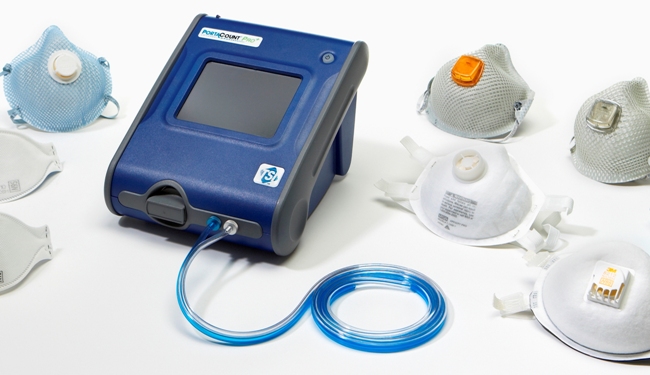Performance of FFP3 disposable respirators
Filtering Facepieces (FFP) are disposable Respiratory Protective Equipment (RPE) for protection against dust, particles and aerosols. They are available in three classes: FFP1, FFP2 and FFP3, with the higher numbers corresponding to better filtering efficiency.
In January 2017, the Health and Safety Executive (HSE) launched RR1087 - Market surveillance of FFP3 disposable respirators, a report describing testing of 10 FFP3 respirator models from 10 manufacturers to determine whether they meet the health and safety performance requirements of EN149:2001+A1:2009.
FFP3 face masks are used in applications such as the protection of construction workers from silicon dust and to protect workers from general airborne dusts generated within the plant and process industries. There are up to 10,000 new cases of lung and workplace respiratory diseases reported each year, and so the correct selection and use of respiratory protective equipment is extremely important. However, while all the masks tested were CE marked, just five passed all the tests with no faults or failures:
- Two models had an isolated fault on a single sample.
- Three models had multiple faults, two of them serious.
- Four of the manufacturers included no, or limited, information on pre-use checks.
Some of these problems should be picked up by an adequately trained operator during their pre-use checks, but faults such as leakage through filtering materials would only have been picked up if the operator was fit tested with the mask in question.
Alan Gilbert, BSRIA Instrument Solutions General Manager, said BSRIA “…will be following closely how industry will respond to this piece of research. Likewise any future policing of the equipment being sold as well as information being provided to the purchaser regarding the need for fit-testing to ensure suitability.”
--BSRIA
[edit] Find out more
[edit] Related articles on Designing Buildings Wiki
- Asbestos.
- CE marking.
- Control of Substances Hazardous to Health (COSHH).
- Deleterious materials.
- Demolition.
- Dust control systems.
- Dust.
- Fit testing.
- Health and Safety Executive.
- Injuries on construction sites.
- Inspections focus on occupational lung disease.
- Personal protective equipment.
- Reporting accidents and injuries on construction sites.
- Respiratory protective equipment.
- The dust control systems market.
- TSI Environmental dust monitoring system.
Featured articles and news
RTPI leader to become new CIOB Chief Executive Officer
Dr Victoria Hills MRTPI, FICE to take over after Caroline Gumble’s departure.
Social and affordable housing, a long term plan for delivery
The “Delivering a Decade of Renewal for Social and Affordable Housing” strategy sets out future path.
A change to adoptive architecture
Effects of global weather warming on architectural detailing, material choice and human interaction.
The proposed publicly owned and backed subsidiary of Homes England, to facilitate new homes.
How big is the problem and what can we do to mitigate the effects?
Overheating guidance and tools for building designers
A number of cool guides to help with the heat.
The UK's Modern Industrial Strategy: A 10 year plan
Previous consultation criticism, current key elements and general support with some persisting reservations.
Building Safety Regulator reforms
New roles, new staff and a new fast track service pave the way for a single construction regulator.
Architectural Technologist CPDs and Communications
CIAT CPD… and how you can do it!
Cooling centres and cool spaces
Managing extreme heat in cities by directing the public to places for heat stress relief and water sources.
Winter gardens: A brief history and warm variations
Extending the season with glass in different forms and terms.
Restoring Great Yarmouth's Winter Gardens
Transforming one of the least sustainable constructions imaginable.
Construction Skills Mission Board launch sector drive
Newly formed government and industry collaboration set strategy for recruiting an additional 100,000 construction workers a year.
New Architects Code comes into effect in September 2025
ARB Architects Code of Conduct and Practice available with ongoing consultation regarding guidance.
Welsh Skills Body (Medr) launches ambitious plan
The new skills body brings together funding and regulation of tertiary education and research for the devolved nation.
Paul Gandy FCIOB announced as next CIOB President
Former Tilbury Douglas CEO takes helm.
UK Infrastructure: A 10 Year Strategy. In brief with reactions
With the National Infrastructure and Service Transformation Authority (NISTA).
























